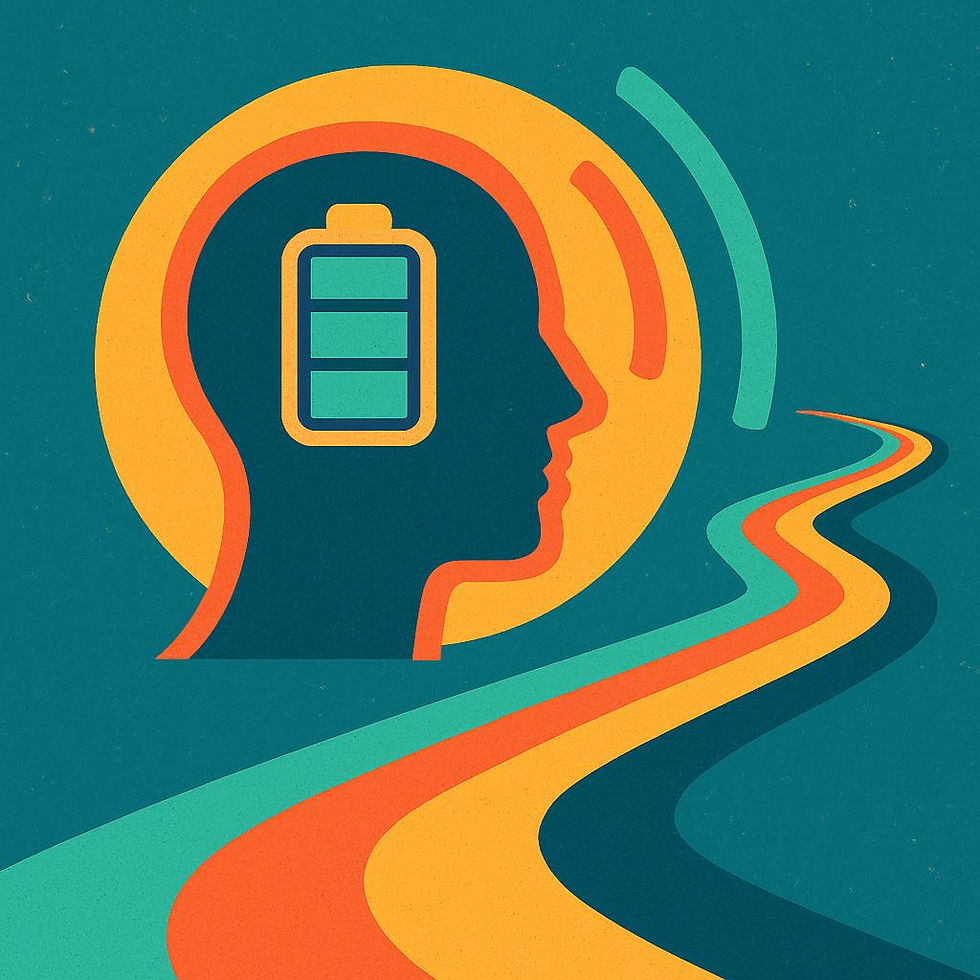Resilience Reboot: What Got You Here Won’t Recharge You Now
- John Winston
- May 7
- 5 min read
There comes a moment when your usual recovery methods stop working. You’re sleeping well, taking rest days, and maybe even journaling or meditating. Still, you don’t feel recharged. You wake up heavy and not rested. You complete your workouts, but the spark isn’t there. It’s not burnout in the dramatic sense. It’s more like recovery just… plateaus.
This is what happens when your recovery tools haven’t grown with your performance. Your system has evolved but your inputs haven’t. What used to work doesn’t land the same anymore. It’s not a problem of motivation or mental toughness—it’s a signal. Your resilience isn’t gone. It’s just outgrown the tools that once sustained it.

Nervous System Maturity Requires Deeper Inputs
Early in your performance journey, recovery is simple. You train hard, sleep enough, eat well, and feel better. The body responds quickly. The system is responsive because stress is still relatively new, and adaptation is rapid. Recovery follows a linear curve.
Over time, your nervous system becomes more complex, not just because of age or volume, but because of accumulated inputs—emotional weight, decision fatigue, lifestyle strain, social pressure. These things don’t just drain energy. They change the way your body processes stress. Your resilience becomes layered, more nuanced, and less reactive to surface-level resets.
This doesn’t mean you’re broken. It means your nervous system has matured, and like any matured system, it requires more precise, layered support to maintain flexibility. What used to be enough—seven hours of sleep, a day off, a quick breathwork session—now barely scratches the surface.
Adaptation Is a Moving Target
Resilience is the capacity to recover and grow through stress, and that capacity is not fixed. It changes based on what you’ve been exposed to and how well you’ve integrated those experiences.
If you’ve had a high volume of stress over time, your body adapts. It becomes more efficient at functioning under pressure. This sounds great, and in some ways, it is. You become more productive, more focused, more driven. The problem is that this adaptation often narrows your range. Your system becomes so good at operating under stress that it forgets how to fully downshift.
This is why people who are “high functioning” can still feel exhausted. The engine is running smoothly but never idling. Eventually, you lose the contrast between high performance and true rest. Everything feels like a version of neutral. That’s the moment when traditional recovery tools stop working because they’re trying to reset a system that no longer recognizes what rest actually feels like.
What Got You Here and Diminished Returns
Many people keep reaching for the tools that used to work—more sleep, more structure, more mindfulness—and get frustrated when the effect is dull. They start thinking something must be wrong with them. Maybe they need to be more disciplined. Maybe they’re just not trying hard enough to recover.
The truth is simpler and less punishing. The system is just saturated. Familiar tools provide diminishing returns when the nervous system has already absorbed all they have to offer. Just like your body stops responding to the same training stimulus, your recovery needs novelty, depth, or variation to remain effective. What got you here has served its purpose, now it's time to upgrade.
This doesn’t mean you throw everything out. It means you evolve how you apply those tools. Sleep becomes not just about quantity, but about quality signals before bed. Movement becomes less about output and more about rhythm and sensation. Even emotional practices need to shift—from journaling about thoughts to tracking what’s felt in the body.
The Role of Emotional Integration
As performance evolves, physical recovery alone no longer supports the full system. Emotional load becomes a major factor. Unprocessed stress, suppressed frustration, or quiet resentment all accumulate in the background. These emotional inputs register in the same regulatory systems that manage physical stress (i.e. heart rate, breath depth, digestion, and vagal tone).
If those emotions aren’t metabolized, they blunt your body’s ability to reset. You might sleep eight hours and still wake up tired. You might take a rest day and still feel tense. That’s not a failure of rest. It’s a sign that part of your system is still holding on to what hasn’t been processed.
Integration is what closes the loop. It turns experience into capacity. Without it, recovery becomes a waiting game rather than a recalibration. The longer integration is delayed, the more your nervous system normalizes tension as the default state.
Recovery That Matches Who You Are
Your nervous system today is not the same as it was a year ago. The inputs you’ve absorbed, both physical and emotional, have changed how you function, how you adapt, and what you need. Resilience is dynamic. It evolves with exposure, and it needs to be fed accordingly.
A powerful way to begin recalibrating is to introduce novel regulation experiences. That might mean shifting your environment, trying a different form of movement, or creating space for stillness that isn’t performance-driven. These changes introduce new stimuli that help your system reorient.
One of the most effective shifts you can make is practicing interoceptive tracking. All it takes is a few minutes each day to notice what your body is actually feeling without judgment or interpretation. This rewires the part of your brain responsible for regulation and helps your system learn what recovery actually feels like again.
This Isn’t About Doing More
The resilience reboot doesn’t require more work. It requires more honesty. A willingness to admit that what once worked is no longer landing and that it’s not your fault. It’s a sign of evolution. You’ve grown past surface-level strategies.
This new phase asks for refinement, not intensity. More space, not more structure. Recovery that respects the nervous system’s complexity, not just its capacity. When you meet yourself where you are now, not where you were when your old tools worked, you unlock access to a deeper kind of strength.
The kind that adapts. The kind that sustains. The kind that’s built to carry what comes next.
References
McEwen, B. S. (2007). Physiology and neurobiology of stress and adaptation: central role of the brain. Physiological Reviews, 87(3), 873–904.
Craig, A. D. (2002). How do you feel? Interoception: the sense of the physiological condition of the body. Nature Reviews Neuroscience, 3(8), 655–666.
Barrett, L. F., & Simmons, W. K. (2015). Interoceptive predictions in the brain. Nature Reviews Neuroscience, 16(7), 419–429.
Porges, S. W. (2011). The Polyvagal Theory: Neurophysiological Foundations of Emotions, Attachment, Communication, and Self-Regulation. W. W. Norton & Company.
Thayer, J. F., Åhs, F., Fredrikson, M., Sollers III, J. J., & Wager, T. D. (2012). A meta-analysis of heart rate variability and neuroimaging studies. Neuroscience & Biobehavioral Reviews, 36(2), 747–756.
Pennebaker, J. W., & Smyth, J. M. (2016). Opening Up by Writing It Down: How Expressive Writing Improves Health and Eases Emotional Pain. Guilford Press.





